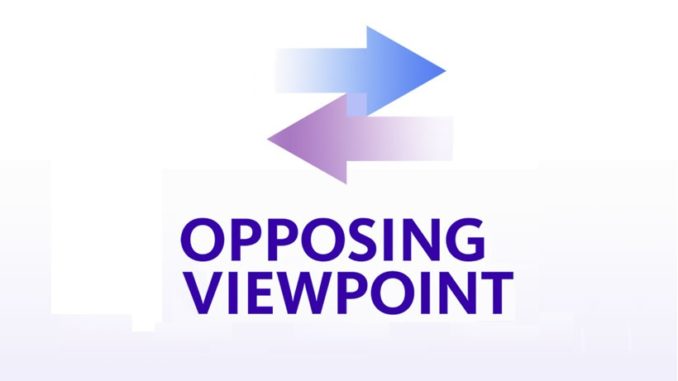
Voting on the Creek 9 Golf Course Remodel has commenced. If passed it will tie up all of the discretionary funds within the community. The POA has presented very little detail in regards to what exactly we are voting on, and even less regarding the alternatives. One board member, in a private email, has expressed concern that there is a possibility that the POA has engaged in fraudulent presentation of facts. As the community embarks upon this Creek 9 Vote, a quick review of some Real Facts and Alternative Viewpoints by various property owners deserves presentation.
First, I encourage everyone to read a brief article by Big Canoe’s pre-eminent Financial Blogger, Patricia Cross, entitled “And Now We Will Decide…” Ms Cross has an excellent and longstanding reputation as a writer, analyst and presenter of facts within this community. Her most recent article on the topic of the Creek 9 Vote is a very well written, and empassioned argument to “Vote No”. Every property owner should at least read it before they vote. If you disagree, you can still always vote yes. If you do agree, you should perhaps email a link to all property owners you know.
Second, a property owner I am not familiar with, named Jim Brescia, wrote an excellent Opinion Piece in the September Smoke Signals Newspaper on the subject. The article, entitled “Big Canoe’s $6 Million Amenity” can be found on page 23A of this month’s front page News Section. It also deserves a good read, makes a very strong argument not only to Vote No, but also that perhaps the community should start rethinking the issue of 18 vs 27 holes of Golf within the community. Scroll down the page in that link to read. If the link doesn’t work, I suggest you look it up in the print edition.
Thirdly, I believe Facts Matter. I have always disliked the way the Big Canoe POA misrepresents the profitability of Golf within the community, and the popularity of Golf within the community. In the lead up to this vote they have repeatedly pushed the false narrative that the GOLF Amenity is profitable to the tune of $190,000 per year (their stated average over the past 5 years). That is easily proved as false. Also provably overstated is the popularity of Golf amongst property owners. The following brief segments are excerpts from an article on the subject I wrote well over a year ago titled “How the Chambers Report misleads us about “GOLF” in Big Canoe. Is it time for a change of direction?” There is much more good information in that article (my apologies as it is a bit long winded), but I really want to focus on just the first 2 sections, presented here again as excerpts below:
EXCERPT: Part 1: The Chambers Report
According to the Chambers Report Summary (Pg 2), 65% of Respondents think that “Golf Course Enhancements” are a low priority. Of course, that is NOT how the Report presents it, which is as “an enhancement that Big Canoe property owners feel *is* top priority” — with a percentage score of 35%. I guess that when ALL of your top five projects get less than 50% support – the best way to spin it, is to pretend that being in the “Top 5” of things most people overwhelmingly do not support – actually implies “top priority”.
The manipulation doesn’t stop there. Even that 35% number is in serious question. Below is a quote from the introduction of the Chambers Report (Pg 3):
- 1,858 Surveys were returned from 1,350 unique lot numbers resulting in 40% of the overall Property Owners responding to the survey. (out of 4,645 total property owners)
On Page 34 of the Report are two important data points about the Golf portion of the survey:
- Of the 1858 respondents, 42% responded they had utilized the golf facilities in the past year. (1858 x 42% = 780)
- 46% of those said they were Golf Members. (780 x 46% = 359 Golf Members, which represents 19.3% of all survey respondents).
On Page 11 of the March 2019 Measures and Tracking Report, it was reported that the Entire Community had:
- a total of 389 Golf Members.
That means that “Golf Club Members” had a 92% Chambers Survey Response Rate (359 / 389 = 0.92), compared to an overall Community Members Response rate of 40%. Chambers says that the margin of error on the overall report is 2.2%, but it clearly fails to factor in an extremely overweighted segment of the community – which is the “Country Club Golf crowd” that utilizes the Clubhouse and Golf Amenities at a much higher rate than the average Property Owner. Golf Members (389) represent only 8.4% of the total Property Owners, but they represented 19.3% of the Survey Respondents. We don’t track the “Casual Players” so this is just a hypothesis – but I am willing to bet that segment is severely over-represented as well in the Survey.
The takeaway is that even the exceptionally low “35%” support for “Golf Course Enhancements” is likely inflated due to a survey population that is heavily over-weighted towards Golfers. Conversely, the 65% of people that think “Golf Course Enhancements” are a LOW PRIORITY, is probably an even higher percentage. It was a nice try at spinning support for “Golf Course Enhancements”, but in the end they cannot hide the fact that there is extremely low community support for any expensive Golf Project. I think it is safe to deduct that there is actually substantial Opposition to the plan.
EXCERPT: Part 2: The Real Financial Picture of Big Canoe Golf
The following financial overview is based upon the last 5 years of Annual Financial Reports submitted to the property owners, excerpted here: 2018 ; 2017 ; 2016 ; 2015 ; 2014. As reported in these POA Financials, the following are the annual Profit & Loss numbers for Total Golf Net Income.
$185,253 (2018 Profit); $219,885 (2017 Profit); $252,028 (2016 Profit); $106,911 (2015 Profit); $133,746 (2014 Profit)
- Over the entire 5 Years that is a total of $897,823 in PROFIT for Overall Golf Net Income.
- As an annual Average over the 5 Years, that equates to $179,564 in PROFIT Per Year!
THE PROBLEM with that pretty picture is that it is completely fabricated, manipulated and spun to make it look like we are making money on Golf, but the reality is that Golf is hemorrhaging money losses. Every year we pump enormous “Capital Expenditures” into the Golf program – which are neither counted as Golf Maintenance nor Operating Costs. They actually ARE those things – but in a trick of accounting magic, those costs get counted as Depreciated Cap Ex spending, and not reported in profit/loss. Let’s look at the real numbers, which include the $2,334,216 of Annual Golf-Related Capital Expenditures that we’ve taken directly from the annual financial statements.
Below is what we’ve actually spent on Golf over the past 5 years:
2018: +$185,253 (Reported Profit) – 248,632 (Cap Ex) = -$63,379 Annual LOSS
2017: +$219,885 (Reported Profit) – 201,604 (Cap Ex) = +$18,281 Annual Profit
2016: +$252,028 (Reported Profit) – 1,082,354 (Cap Ex) = -$830,326 Annual LOSS
2015: +$106,911 (Reported Profit) – 192,983 (Cap Ex) = -$86,072 Annual LOSS
2014: +$133,746 (Reported Profit) – 608,643 (Cap Ex) = -$474,897 Annual LOSS
- REAL Average Over 5 Years: -$287,278 LOSS PER YEAR
- REAL Total Over 5 Years: -$1,436,393 LOSS
The above numbers are the REAL amounts of money we have spent on Golf over the past 5 years. If the Golf Program DID NOT EXIST AT ALL – then that is the amount of extra money that we would have in our Bank Account over the 5 years based on the direct savings. So let us be perfectly clear that having a Golf Program in Big Canoe is NOT making us any profit – unless presented as a CapEx Depreciated Schedule.
HERE IS THE TRUTH: Even if you are able to depreciate something for Accounting Records – you still spent it.
2019 Update: As previously noted, the above numbers are excerpted from an old article. Since then the 2019 Profit/Loss numbers for the Golf Amenity have become available. The 2019 Audited Financials recently released show that Golf made $187,523 in 2019. But that same Audit also showed that we further expended $385,842 that same year on Cap-Ex for the Golf Course. That brings the overall 2019 Golf Amenity LOSS to -$198,319 ($187,523 stated Profit minus $385,842 in additional Cap-Ex spending). The 2019 Auditd Financials are available to Members at the Big Canoe POA website.
I will now close with two additional and important notes that I believe are worthy of consideration as well:
(1) The latest legally required 4 year Reserve Study is almost out, and it is going to detail some substantial Infrastructure and Maintenance Costs that are coming up. Another “False Narrative” that has been pushed in the lead up to the Creek 9 Vote is that the Reserve Fund has more than enough to cover any potential Lake Petit Dam Repairs. The 2016 Reserve Study upon which the Reserve Fund is legally modeled, identified $48 MILLION in future replacement costs – not including the Lake Petit Dam, and not including unforeseen emergencies or disasters (i.e. a Forest Fire within Big Canoe). The narrative that the Reserve Fund is an exclusive emergency fund for the Dam is ludicrous. It is a teeny tiny drop in the bucket that is designed to cover a multitude of enormous expenses, foreseen and unforseen. It is also legally mandated to be replinished (via assesment) upon expenditures.
(2) The Lake Petit Dam is a very big Financial Question Mark at this point. The Community could be looking at Mitigation Repairs to the Dam which quickly burn through our Reserves. The Estimated Potential Costs to Repair are already publicly stated at $3,550,000 (well above the $2,800,000 in our Reserve Fund). But that $3.55 Million is also an estimated number from over a Decade ago. What is the cost going to be in 2020 dollars??? We don’t know yet, and that is my final point.
I hope that this presentation of some opposing facts and viewpoints has been of assistance to Property Owners as they decide how to Vote on the Creek 9 Project.
Peace,
– david / publisher
Focus on Big Canoe, GA
* a publication of The Mountains Voice




Be the first to comment